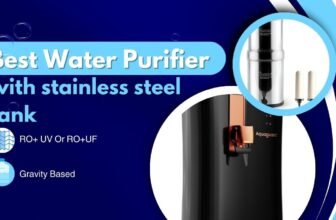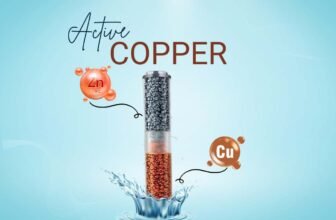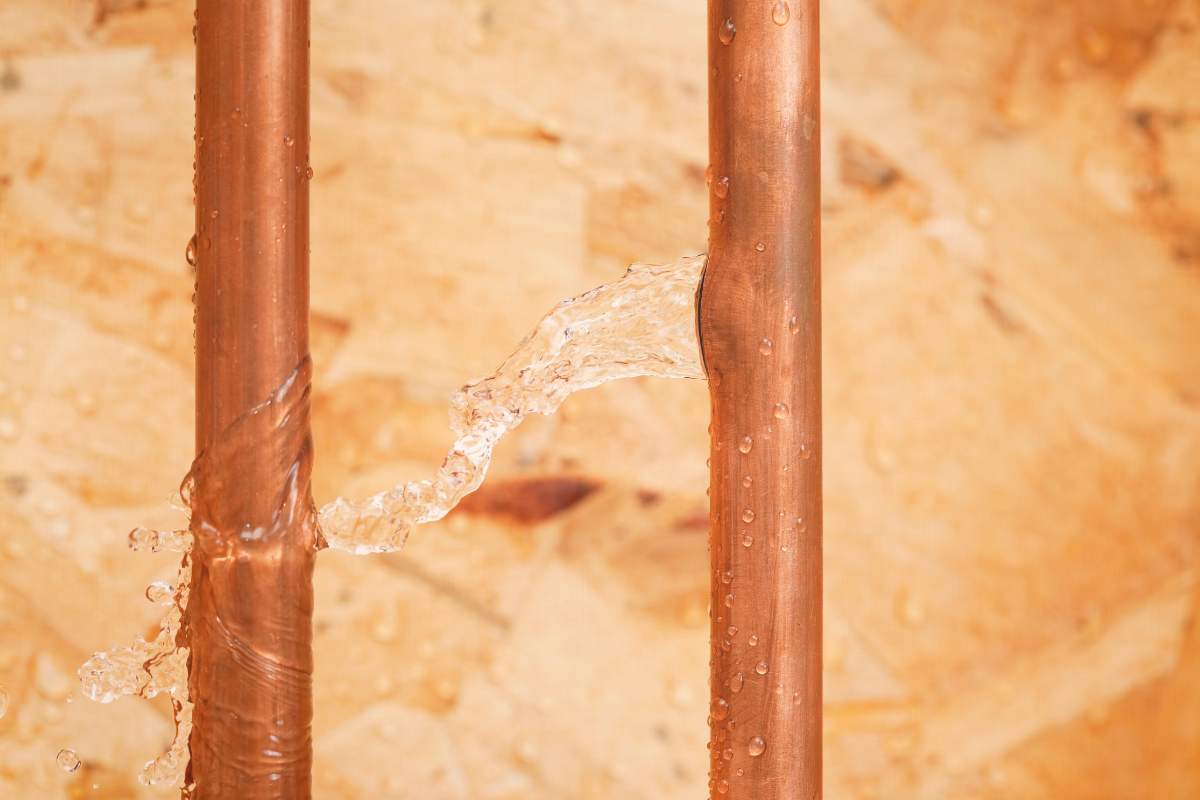
Copper water purifiers have been touted for their potential health benefits, primarily the ability to kill harmful microbes and impart necessary minerals. These units, which often incorporate copper in their water purification process, take advantage of this metal’s natural antimicrobial properties. Consumers using copper water purifiers expect to enhance their drinking water quality by leveraging the oligodynamic effect copper has on bacteria and viruses.
However, there are potential disadvantages that are less frequently discussed. Prolonged use of water from a copper purifying system might lead to an accumulation of copper, a condition referred to as copper toxicity, which could have detrimental health consequences. This is particularly true if the water has a high natural acidity or the pipes in one’s home also contribute to the levels of copper present in the water. Additionally, the maintenance of these systems is crucial; without regular care, the efficacy of copper water purification can decrease over time, leading to a potential risk of bacterial growth within the purifier itself.
Being aware of such drawbacks is critical for consumers considering using copper water purifiers. It’s essential to understand not just the perceived advantages but also the nuances of their operation, potential health implications, and the importance of maintenance in ensuring the safety and effectiveness of the water supply.
Potential Drawbacks of Copper Water Purifiers
While copper water purifiers are lauded for their antimicrobial properties, several drawbacks associated with their use are worth considering, such as health risks from overexposure to copper, altered water quality and taste, and the limitations compared with other purification technologies.
Copper Toxicity and Health Concerns
An excess of copper from these purifiers can lead to copper toxicity, a condition which may cause gastrointestinal distress and more serious health concerns in the long term. Prolonged storage of water in copper vessels increases the risk of copper leaching into the water, especially if the water is acidic or stored for extended periods.
Impact on Water Quality and Taste
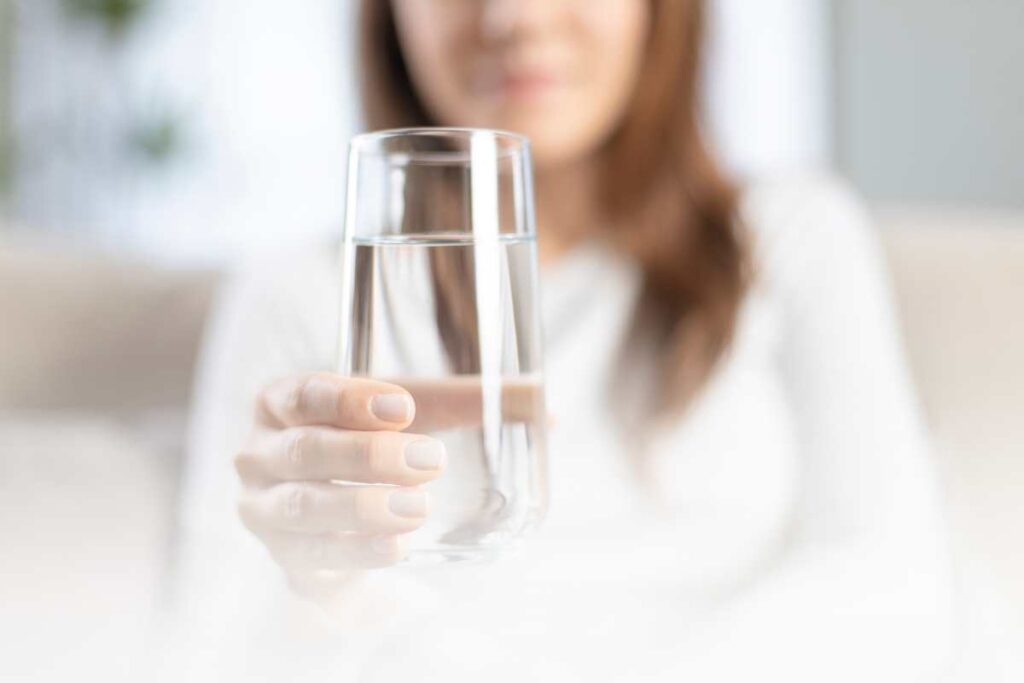
Copper can have a direct impact on taste and the overall sensory experience of drinking water. Some individuals may find the metallic taste unpalatable. Moreover, if water with a high pH level is stored in copper vessels, it can lead to further deterioration in quality and potential health risks.
Storing Water in Copper Vessels
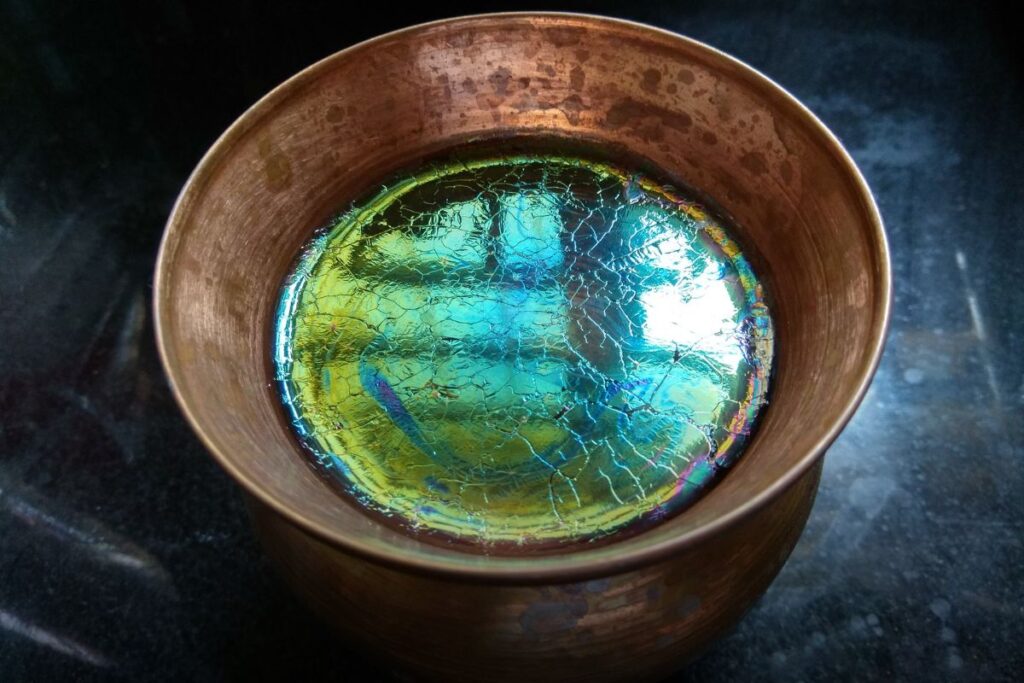
It is important to understand that storing water in copper vessels for a shorter duration poses less risk; however, doing so for over six hours at room temperature could lead to an increase in copper concentration, which might exceed safe drinking levels set by health organisations.
Comparison with Other Water Purification Methods
Comparatively, copper water purifiers may fall short against modern water purification technologies. Systems like reverse osmosis and UV filtration offer broader protection against a variety of contaminants without altering the mineral balance and taste of the water as significantly as copper-based solutions.
Copper’s Role in Water Purification
Copper has been utilised in water purification due to its antimicrobial properties. Copper ions can effectively purify water and its usage requires monitoring to safeguard against potential health risks.
Effects of Copper on Purification Process
When copper is used in a water purifier, it releases copper ions which contribute to the elimination of bacteria and viruses, thereby purifying the water. This antimicrobial property of copper is beneficial since it can help reduce the load of harmful organisms in water.
Copper Induced Health Risks
However, an excessive amount of copper in drinking water can lead to health risks, including stomach issues and, over longer periods, copper toxicity. Copper toxicity is a serious condition that can manifest with liver and kidney damage, and it typically occurs from ingesting high levels of copper over time.
Safety Levels of Copper in Water
The safe copper levels in drinking water set by regulatory authorities usually do not exceed 2.0 mg of copper per litre of water. Drinking water with copper concentrations greater than this can increase the risk of health concerns, hence it is crucial to ensure that copper water purifiers do not dispense water exceeding these levels.
Benefits and Concerns of Copper in Drinking Water
The inclusion of copper in drinking water through the use of purifiers has its advantages, notably its efficacy in bacterial elimination, but it also raises discussions regarding the health impacts of daily copper intake and whether copper vessels are suitable for everyday use.
Efficacy in Bacterial Elimination
Copper is known for its antimicrobial properties which make it effective in eliminating harmful bacteria from drinking water. The presence of copper has been consistently shown to reduce microbial concentrations in water, providing a cleaner and safer drinkable resource.
Debate over Copper Vessels for Daily Use
There is an ongoing debate about the practicality of using copper vessels on a daily basis. While drinking water from copper can add trace minerals into one’s diet, questions arise concerning the correct copper content in water required to reap the benefits without experiencing adverse effects. Compliance with standard guidelines is necessary to maintain safe levels of copper intake.
Health Impact of Copper Intake
The extent to which copper affects the body is complex. A regulated amount of daily copper is essential for bodily functions. However, excessive copper intake can lead to toxicity with serious health implications. Careful calibration of copper-based water purification systems is critical to ensure that the copper levels in drinking water are within the recommended limits for healthy consumption.
Copper Intoxication and Limits
Copper, an essential trace mineral in the human body, can become toxic when ingested in large quantities. This section examines the potential adverse effects and outlines the recommended intake limits to avoid copper intoxication.
Excessive Copper Intake Effects
When individuals consume a sufficient amount of copper, it supports various bodily functions. However, excessive copper can lead to toxicity, displaying copper toxicity symptoms such as stomach pain, dizziness, and vomiting. Chronic exposure may cause severe liver and kidney damage.
Long-Term Health Implications
In the long term, copper toxicity can contribute to several long-term health effects, including neurological and hepatic disorders. Persistently high levels of copper in the body may result in serious conditions such as Wilson’s disease, wherein copper builds up in vital organs, leading to life-threatening issues.
Advisable Copper Consumption Limits
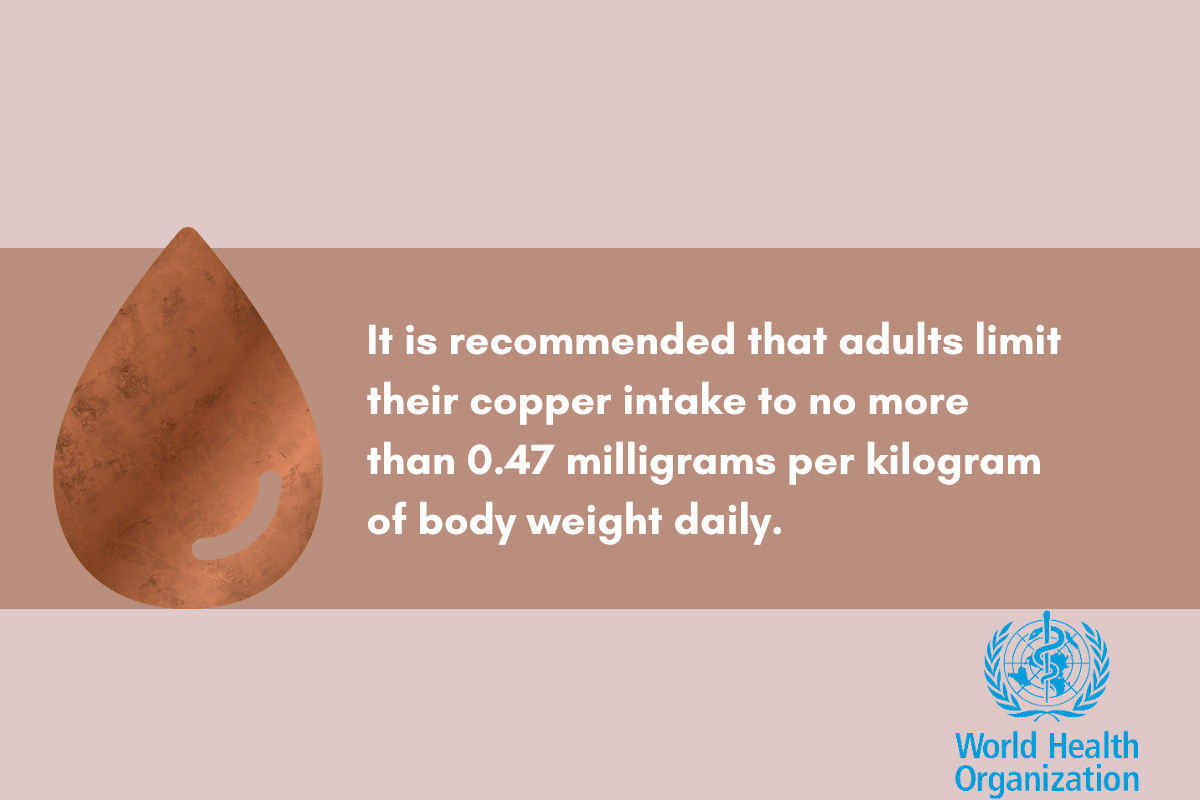
The recommended copper limits are imperative to follow to prevent copper intoxication. According to the current guideline of WHO, adults should not exceed 0.47 mg of copper per kilogram of body weight per day. It is crucial to maintain a balanced intake, ensuring a sufficient amount of copper without surpassing safe consumption levels.
Comparative Assessment of Copper Purifiers
In this section, we take a measured look at how copper water purifiers stand in relation to traditional water purifiers, with a focus on the specific aspects of cost, environmental considerations, and consumer satisfaction.
Versus Traditional Water Purifiers
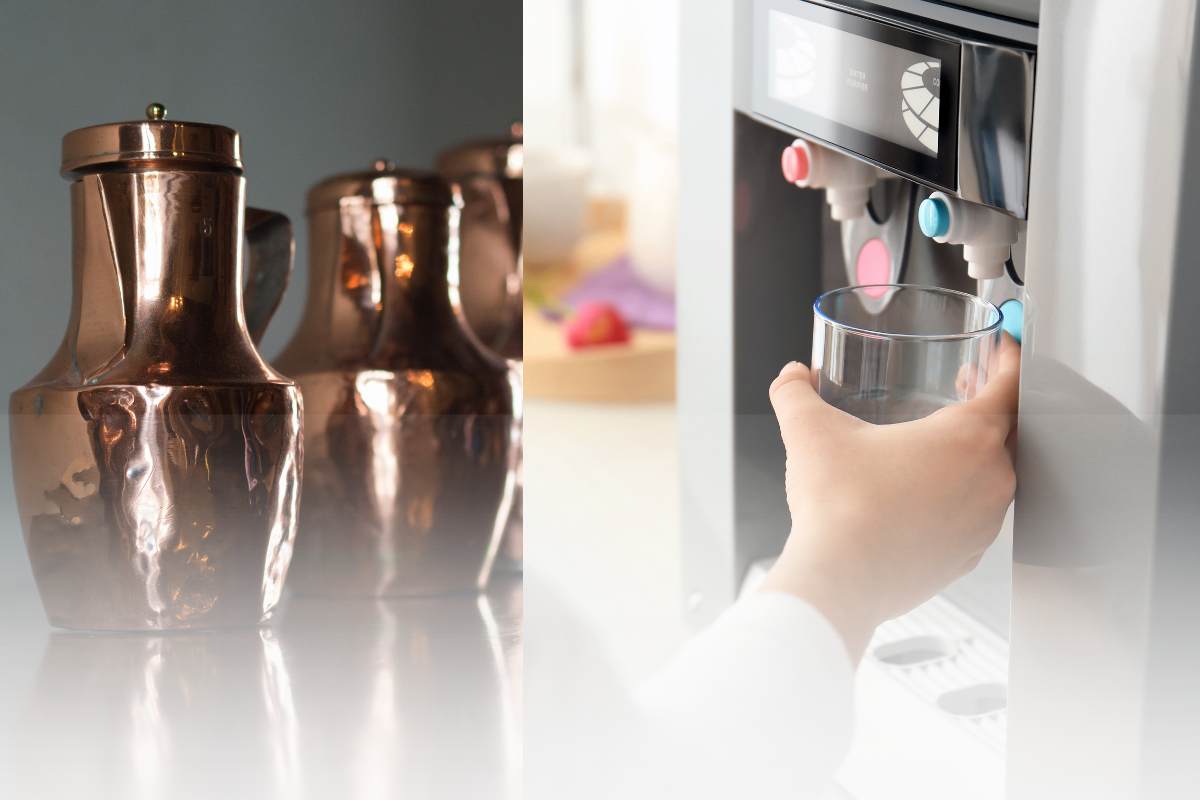
Copper water purifiers have garnered attention for their purported health benefits, such as their anti-microbial properties, which are absent in many traditional purifiers. They assert an advantage by infusing water with copper, which some studies suggest can offer anti-inflammatory benefits. However, comparing these to traditional purifiers, one must also consider that traditional systems, often devoid of such mineral infusion, may require less frequent maintenance and could be more reliable in consistently removing contaminants.
Cost and Environmental Considerations
The initial cost investment for a copper water purifier can be considerable compared to conventional alternatives, with prices reflecting the additional feature of copper infusion. Over time, the replacement of copper parts can add to the expenditure, driving the lifetime cost higher. From an environmental standpoint, copper purifiers argue an edge by potentially reducing plastic waste due to their long-lasting nature, but the extraction and processing of copper also present environmental concerns. Consumer satisfaction appears mixed, with individuals balancing the purported health benefits against the increased financial outlay and maintenance considerations.



